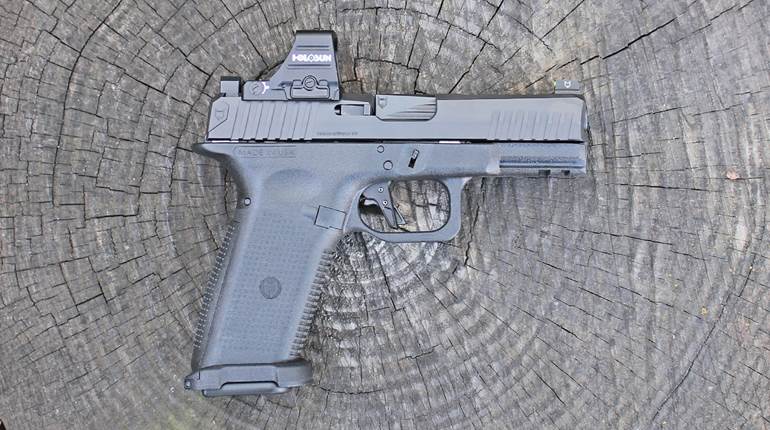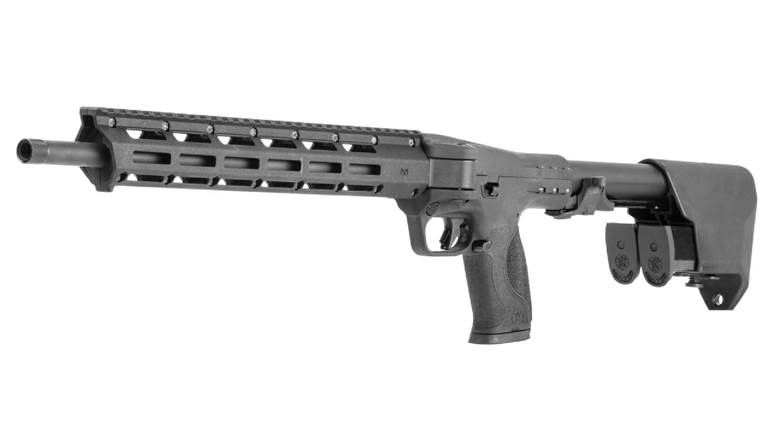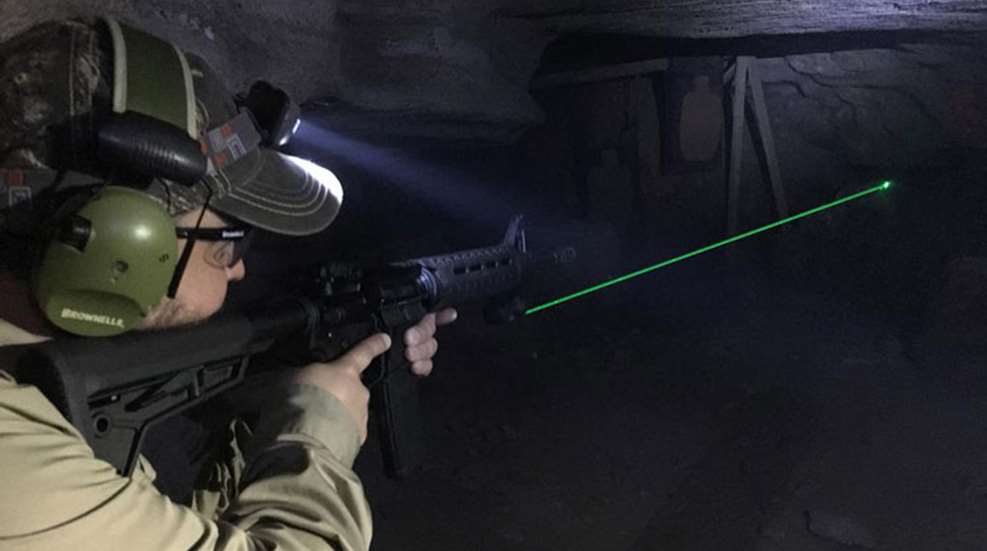
In August 2016, I had the opportunity to gather with a handful of top industry writers for the highly anticipated release of the new Crimson Trace LiNQ system at the Rockcastle Shooting Center in Park City, Ky. With its knobby terrain above and winding cave systems below, Rockcastle proved to be an ideal testing ground for the first-ever wirelessly controlled laser sight and illumination system.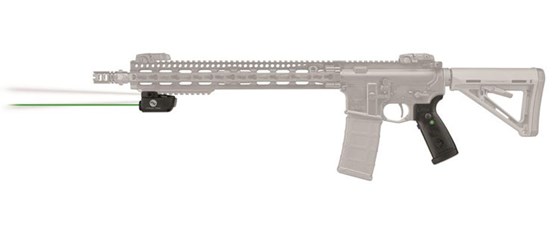
The new LiNQ is designed specifically for popular AR-type platforms, including AR-15, AR-10, M4 and HK416 variants. The system arrives with two primary components including a laser sight and light module along with a specialized AR control grip. The two units communicate with each other using a proprietary encoded radio signal. This allows the module to be activated and controlled by the grip without the need for clumsy wires or tape switches.
The wireless system has been carefully tested to ensure it cannot be hacked or overpowered by conventional methods. A unique encrypted bond, or pairing, is established between the grip and the laser module at the factory. The "code" for the pair is stored in the memory of both units. Once the pairing process is completed, the grip and the laser unit will only be able to interact with each other. Because the LiNQ uses a closed system it's not visible to other wireless devices. 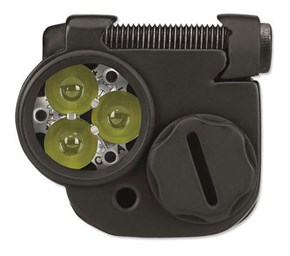
The laser and light are fitted into a rugged, water resistant (IP58), hard-anodized aluminum housing designed to handle a good deal of abuse. The integral rail mount (wrench included) allows the module to be attached to M-1913 Picatinny or similar accessory rails that are at least 2.75" long. The three LED 300-lumen flashlight is paired with a green laser diode that operates in four modes, including Laser Only, Light Only, Laser and Light, Laser and Strobe Light. While other companies opt to use less expensive plastic lenses to cut costs, Crimson Trace installs a glass lens in the LiNQ system. This ensures a bright, focused laser dot downrange instead of a blurry or misshapen point. A tool is provided to adjust the laser for both height and windage.
A front-mounted removable cover allows the module's single CR123 battery to be replaced without removing the unit from the rifle rail. A large rear-mounted switch allows the module to be activated and cycle modes independently of the grip in case the grip's battery runs out of power. 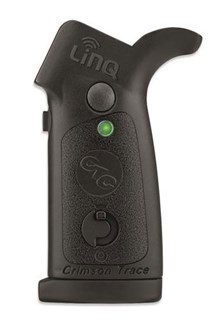
The AR-type grip control is constructed of high-impact resistant polymer, is certified as waterproof (IP67), and fits most standard AR lowers. It takes its general design cues from the classic A2-type grip, so it looks and feels familiar to AR fans. The sides have an aggressive texturing reminiscent of skateboard tape with raised-line texturing along the front and back straps.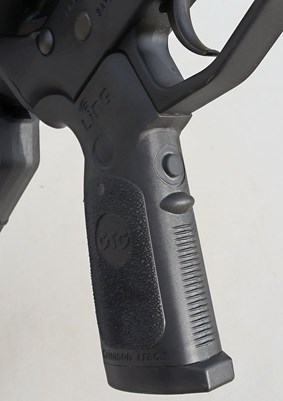
The round ambidextrous activation button is located on the front of the grip where it’s depressed by the middle finger of the shooting hand when the operator forms a shooting grip. There is a slight finger bump just below it. Recessed right- and left-side Mode Selector buttons are located at the top of the grip above the aggressive texturing with green LEDs below them that flash when the batteries are low on power or when the grip and laser are in the process of pairing. On the bottom of the grip is a removable cover for the single CR2 battery and a tethered rubber plug that protects the grip screw channel from moisture and dirt. A master On/Off switch is located on the lower left side.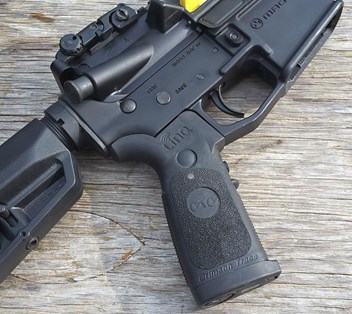
Installing the Grip
Installing the LiNQ control grip follows the same steps as installing other aftermarket grip upgrades. After verifying that the rifle is completely unloaded, remove the previous grip's support screw. Be sure not to drop or lose the safety selector detent or spring as the grip is removed. Remove the rubber plug from the LiNQ grip and then use the mil-spec hex-head screw and long hex wrench provided with the LiNQ system to attach it to the lower receiver. Replace the rubber grip plug, install the battery and the grip control is ready to use.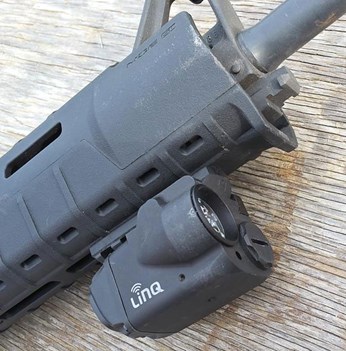
To cycle the system's modes, start with the laser module off and ensure the grip's master power switch is in the On position. Depress and hold either the right or left side selector switch on the grip first, and then depress the front facing instinctive activation switch. While holding both of these buttons down simultaneously, the module will cycle through the four modes until the buttons are released. This is easily accomplished using the thumb of the shooting hand to hold the Mode Selector and the middle finger of the shooting hand to hold the activation button.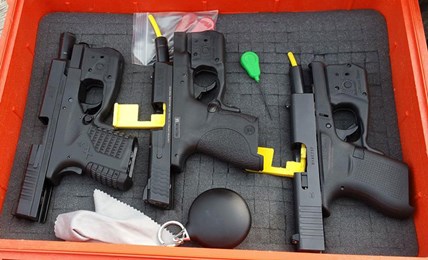
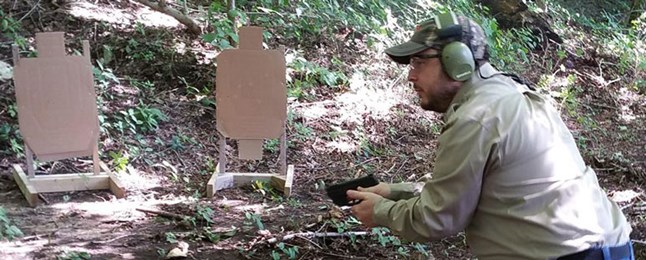
Our group spent two days putting a few factory fresh LiNQ systems through their paces at the Rockcastle Shooting Center using Smith & Wesson Model M&P15 MOE Mid MAGPUL series AR rifles chambered in 5.56 NATO (.223 Rem.) as test platforms. We also spent some quality time with a compact 9 mm Smith & Wesson Shield, Glock G43 and Springfield XD fitted with Crimson Trace Laserguard sights.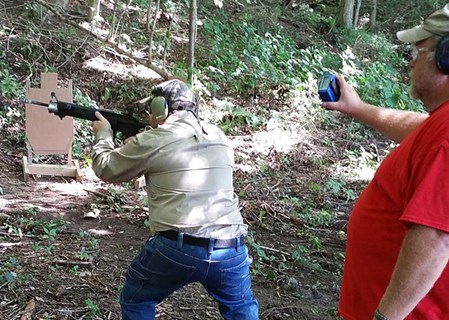
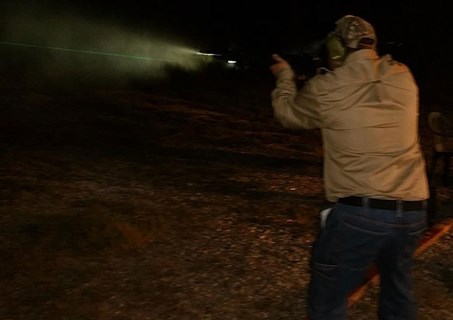
We engaged rifle and handgun targets while moving up a hillside 2-gun course during the day and shot on a traditional flat range IPSC/IDPA type course at night. But by far the most unusual and informative training experience at Rockcastle was "shooting the cave." After 4-wheeling to the cave mouth, we had to bear crawl through a convoluted opening. Once inside, we lined up at the beginning of an absolutely pitch black 800' long limestone corridor that twisted and turned in unpredictable ways. We were informed that this particular cave was selected for use as a practice course because it was uninhabited by bats or other wildlife that thrive in abundance in other protected caves on the property.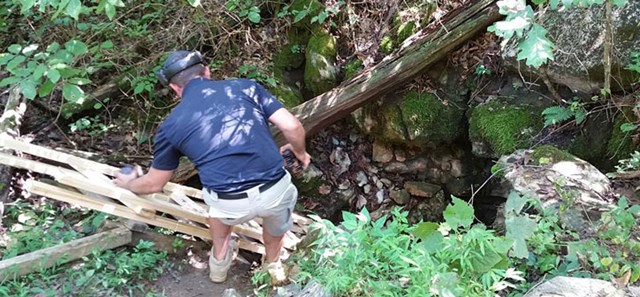
Targets were set high and low with the only illumination provided by the LiNQ's light and the operator’s head lamp. The strange way in which sound was absorbed by the porous walls, the uneven floor, the rough clothes-catching walls and the utter darkness drove a level of concentration that was focused, to say the least. The LiNQ proved to be a reliable and easy to use system throughout the entire event.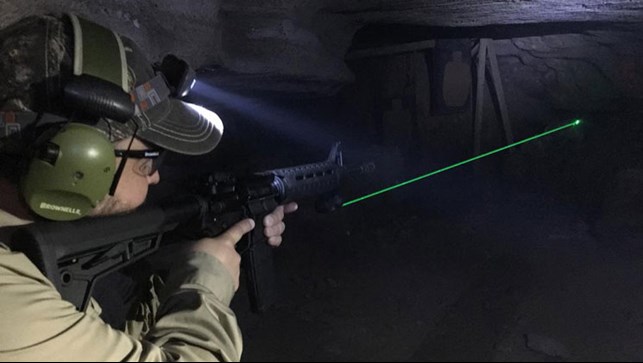
The new Crimson Trace LiNQ system is remarkable among today’s long gun laser sight offerings because its wireless controls allow it to blend so seamlessly into the gun it's attached too. Like the company's instinctive activation pistol grips, the LiNQ system is up and running the moment the operator grasps the grip. No fuss, no muss, just reliable illumination and laser sighting without the hassle of support-hand activation switches or looping cables.
The system is rugged, reliable and ready to go to work in the harsh conditions so common to law enforcement and military applications. This means it will easily stand up to regular use in civilian roles including competition and home defense. If either the grip or laser module is damaged or lost, the remaining component can be paired with a replacement. The system is in production now and will be shipping soon. The LiNQ system comes with a standard Crimson Trace three-year warranty and qualifies for the company's exclusive Free Batteries for Life program. 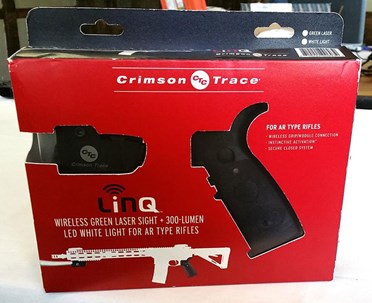
NRA Specifications
Manufacturer: Crimson Trace
Model: LNQ-100G LiNQ
Wireless Grip-to-Module Communication/Connection
Module: Hard Anodized Aluminum, Water Resistant (IP58)
Grip Control: Polymer with Instinctive Activation Switch, Waterproof (IP67)
Color: Black
Activation Mode: Pressure Activated
Light: 300-lumen Three LED White Light
Laser: Green, User Adjustable for Windage and Elevation
Sighting: Laser Factory Sighted for 50'
Laser Dot Size: Approx. 0.50" at 50'
Battery Life: 2 Hours
Warranty: Three Year Full Warranty
MSRP: $649














